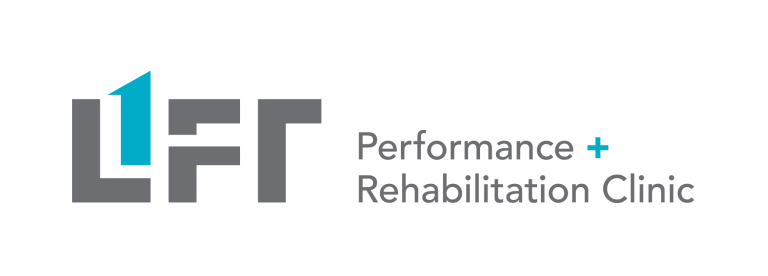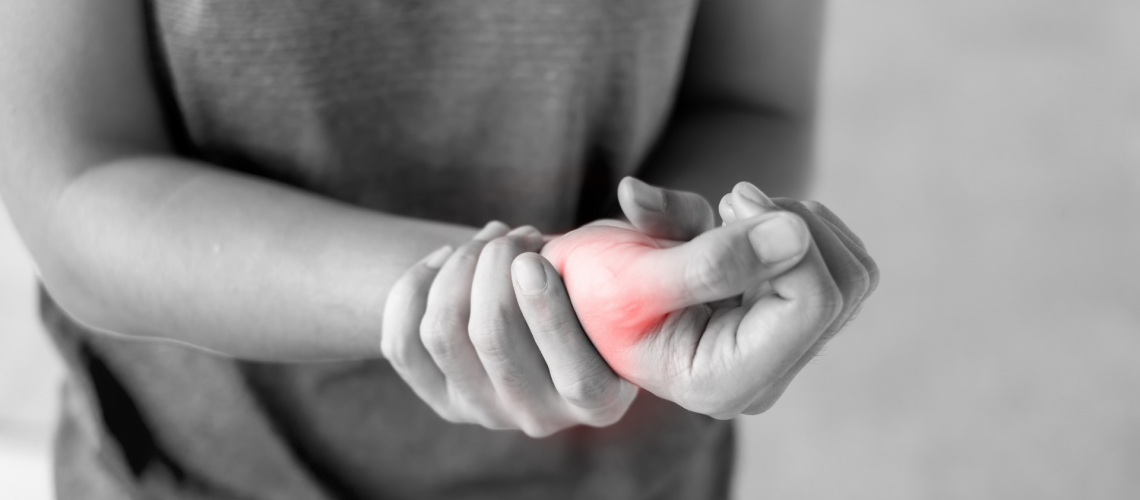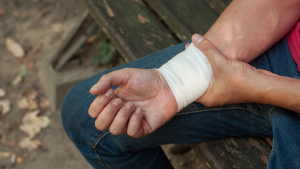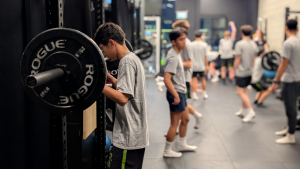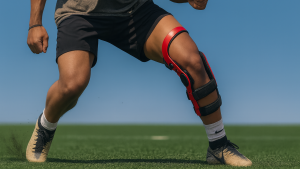If you’ve ever heard anyone complain about a sore thumb from lifting, then they might be dealing with De Quervain’s Tenosynovitis. It develops when the tendons of your thumb muscles are overused, leading the inflammation of the sheath around the tendon. In sports, it is commonly found in sports that require gripping of equipment (racquet sports, rowers, and golfer’s). It is also commonly found in new moms due to frequent lifting and carrying of the newborn. The condition is so common with new mom’s that it is also commonly known as “Mother’s Thumb”.
What does it feel like? There is usually some local tenderness and swelling in the area. As the condition develops, there may be a noticeable bump at the base of the thumb. There may be pain in the thumb region when lifting and carrying objects and may also affect other day to day tasks such as using a phone.
What can be done about the thumb and wrist pain?
- Wear a splint or brace to offload the thumb.
A splint or brace helps to support the thumb tendons by redistributing the load and still allow for movement. It can also help decrease the pain in thumb while doing activities. - Stretching exercises to decrease symptoms and strengthening to improve load tolerance.
Gentle stretching of the thumb can help to reduce the tightness in the muscles and reduce symptoms. Strengthening the muscles around the wrist, fingers and thumb can help to improve activity tolerance of the hand. - Address the potential cause of the issue.
If you’re playing a sport that requires gripping of equipment, it may be a good idea to look at the equipment for wear and tear. Some things to consider are grip width and the quality of the grip itself. You can also speak to a coach to look at any flaws in technique. Common issues are either gripping too hard or not gripping enough.
Mothers’ can find relief by using more supportive equipment (such as pillows for feeding). They can also try to change the way they lift and carry the baby to redistribute the load. Instead of picking the baby up from under their arms with a neutral grip position, turn your hand so your palm faces upwards to allow the use of different muscles when carrying. - See a physiotherapist for treatment.
The thumb responds well to manual therapy to help decrease tightness in the muscles and improve range of motion and function of the thumb. - See a doctor for a corticosteroid injection.
A doctor may recommend a corticosteroid injection to decrease the pain and inflammation. It may be beneficial to get the pain and inflammation under control while also apply the other treatment options.
How can a Physiotherapist / Chiropractor/ Registered Massage Therapist at Lift Clinic help with De Quervain’s Tenosynovitis?
Our Lift Clinic clinicians are able to do an in-depth assessment to determine what may have caused wrist/thumb pain. The assessment can also rule out any serious pathology, and any other potential causes for wrist/thumb pain. If you have been suffering from De Quervain’s Tenosynovitis our Vancouver Lift Clinic clinicians can help you address the cause, reduce your symptoms, and plan out your recovery. Our clinicians can determine the best type of Physiotherapy, Massage Therapy, or Chiropractic treatment options for your wrist and thumb. These include joint mobilization, joint manipulations, soft tissue mobilization, exercises and education about the condition. They can also refer you out to the right specialists to ensure you get the help you need. Our goal at Vancouver Lift Clinic is to help you get back to doing what you need to do.
